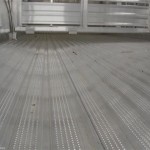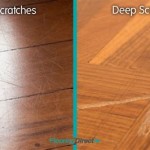Rubber Marine Flooring: A Durable and Safe Solution for Aquatic Environments
Rubber marine flooring represents a significant advancement in decking and interior surface materials for boats, yachts, and other watercraft. Unlike traditional flooring options, rubber offers a unique combination of durability, safety, and comfort, making it a preferred choice for both recreational and commercial marine applications. This article will explore the multifaceted benefits of rubber marine flooring, outlining its properties, advantages, installation considerations, and diverse applications in the maritime industry.
The marine environment presents several challenges to flooring materials. Constant exposure to saltwater, UV radiation, and extreme temperature fluctuations can quickly degrade conventional surfaces like wood, carpet, or vinyl. Slippery surfaces, especially when wet, pose a safety hazard for passengers and crew. Rubber marine flooring is specifically engineered to withstand these harsh conditions, providing a long-lasting and secure surface.
Key Benefits of Rubber Marine Flooring
Rubber marine flooring offers a range of advantages over traditional materials, contributing to enhanced safety, durability, and aesthetic appeal. These benefits make it a compelling choice for boat owners, shipbuilders, and marine professionals seeking reliable and long-lasting flooring solutions.
Enhanced Safety: One of the primary benefits of rubber marine flooring is its superior slip resistance. The textured surface of rubber provides excellent traction, even when wet, significantly reducing the risk of slips and falls. This is particularly important on boat decks and in other high-traffic areas where water exposure is common. Furthermore, rubber flooring can offer cushioning, which helps to mitigate injuries from accidental falls. In comparison to smoother surfaces like fiberglass or polished wood, rubber flooring significantly improves safety onboard a vessel.
Exceptional Durability: Marine environments are notoriously harsh, exposing materials to saltwater, UV radiation, and extreme temperatures. Rubber marine flooring is specifically designed to withstand these elements. It is resistant to saltwater corrosion, UV degradation, and temperature fluctuations, ensuring long-term performance and minimizing the need for frequent repairs or replacements. High-quality rubber compounds are used in manufacturing, contributing to its resistance to tearing, abrasion, and impact damage. This durability translates into reduced maintenance costs and a longer lifespan compared to conventional flooring options.
Superior Comfort and Noise Reduction: In addition to safety and durability, rubber marine flooring offers improved comfort and noise reduction. The inherent elasticity of rubber provides a comfortable surface to walk or stand on, reducing fatigue, especially during long voyages. It also acts as a sound dampener, minimizing noise transmission from engines, waves, and other onboard activities. This contributes to a more pleasant and relaxing experience for passengers and crew, particularly on longer journeys.
Types of Rubber Marine Flooring
Rubber marine flooring is available in a variety of types and configurations, each offering specific advantages and suited to different applications. Understanding these types is crucial for selecting the most appropriate flooring solution for a particular vessel and its intended use.
Sheet Rubber Flooring: Sheet rubber flooring is supplied in large rolls, allowing for seamless installation across large areas. This type of flooring is ideal for decks, cabins, and other spaces where a uniform surface is desired. Seams can be heat-welded or chemically bonded to create a watertight and hygienic surface. Sheet rubber flooring offers excellent durability and water resistance, making it a popular choice for commercial vessels and high-traffic areas.
Tile Rubber Flooring: Rubber tiles are available in various sizes and shapes, offering greater design flexibility. They can be easily cut and installed to create intricate patterns and customized layouts. Tile flooring is suitable for smaller areas, such as galleys, bathrooms, and entryways. Individual tiles can be replaced easily if damaged, minimizing disruption and repair costs. The modular nature of tile flooring makes it a versatile option for both new construction and retrofitting projects.
Interlocking Rubber Flooring: Interlocking rubber tiles feature a puzzle-piece design that allows for easy installation without the need for adhesives. This type of flooring is ideal for temporary or semi-permanent applications, such as boat shows or seasonal decks. Interlocking tiles can be quickly assembled and disassembled, making them a convenient option for event spaces or areas that require frequent reconfiguration. While less water-resistant than sheet or glued-down tile options, interlocking tiles offer a practical and cost-effective flooring solution for specific needs.
Poured-in-Place Rubber Flooring: This type of flooring involves mixing rubber granules with a binder and pouring the mixture onto the surface. The mixture then cures to form a seamless, resilient surface. Poured-in-place flooring offers excellent durability, slip resistance, and customization options. It is suitable for decks, pool surrounds, and other areas where a smooth, non-slip surface is required. Poured-in-place flooring typically requires professional installation to ensure proper mixing and curing, but it provides a long-lasting and aesthetically pleasing flooring solution.
Selecting and Installing Rubber Marine Flooring
Choosing the right type of rubber marine flooring and ensuring its proper installation is essential for maximizing its performance and longevity. Several factors should be considered during the selection process, including the intended use of the area, the environmental conditions, and the aesthetic preferences of the boat owner.
Material Selection: The type of rubber compound used in the flooring significantly impacts its durability, UV resistance, and slip resistance. EPDM (ethylene propylene diene monomer) rubber is known for its excellent weather resistance and is a popular choice for outdoor applications. Nitrile rubber offers superior oil and chemical resistance, making it suitable for engine rooms and workshops. Recycled rubber is an environmentally friendly option that can be used in various applications, providing a sustainable flooring solution. The specific requirements of the marine environment should be carefully considered when selecting the appropriate rubber compound.
Surface Preparation: Proper surface preparation is crucial for ensuring a strong and lasting bond between the rubber flooring and the underlying deck or subfloor. The surface should be clean, dry, and free of any contaminants, such as oil, grease, or loose debris. Existing coatings or adhesives should be removed to provide a smooth and even surface. In some cases, a primer or bonding agent may be required to enhance adhesion. Neglecting surface preparation can lead to premature failure of the flooring, resulting in costly repairs or replacements.
Installation Techniques: The installation method will vary depending on the type of rubber flooring selected. Sheet flooring typically requires adhesive bonding over the entire surface, while tile flooring can be installed with adhesive or interlocking mechanisms. Proper alignment and seam sealing are essential for ensuring a watertight and seamless finish. Poured-in-place flooring requires specialized equipment and expertise to ensure proper mixing and curing. It is recommended to consult with a qualified marine flooring installer to ensure that the flooring is installed correctly and according to the manufacturer's specifications. Professional installation can significantly extend the lifespan of the flooring and prevent future problems.
Maintenance and Care: Regular cleaning and maintenance are essential for preserving the appearance and performance of rubber marine flooring. Simple cleaning with mild soap and water is usually sufficient to remove dirt and debris. Avoid using harsh chemicals or abrasive cleaners, as these can damage the surface of the rubber. Regular inspection of the flooring can help identify and address any potential problems, such as tears, cracks, or loose seams. Prompt repairs can prevent minor issues from escalating into more significant problems, extending the lifespan of the flooring. Proper maintenance and care can ensure that rubber marine flooring continues to provide a safe, durable, and attractive surface for years to come.
Environmental Considerations: When selecting rubber marine flooring, it's important to consider the environmental impact of the materials used. Choosing flooring made from recycled rubber content can help reduce waste and promote sustainability. Some rubber flooring manufacturers offer products that are certified by environmental organizations, ensuring that they meet stringent environmental standards. Utilizing eco-friendly adhesives and installation practices can further minimize the environmental footprint of the flooring project. By making informed choices, boat owners and marine professionals can contribute to a more sustainable marine industry.

Custom Marine Rubber Boat Flooring Whole Supplier Pingan

Boat Matting Marine Rv Flooring Deck

Boat Matting Marine Rv Flooring Deck

Marine Deck Matting Black Ribbed Rubber And Foam

Imo Rubber Flooring For Ships Prolance Marine

Boat Marine Matting Rubbersmart Co

Wet Areas Rubber Flooring Perfect Surfaces

Cina Pemasok Lantai Perahu Karet At Diri Disesuaikan Produsen Pabrik Harga Grosir Xyf Marine

Rubber Flooring For Marine S

Cina Disesuaikan Pemasok Lantai Karet Laut Produsen Pabrik Harga Grosir Xyf Marine
Related Posts








